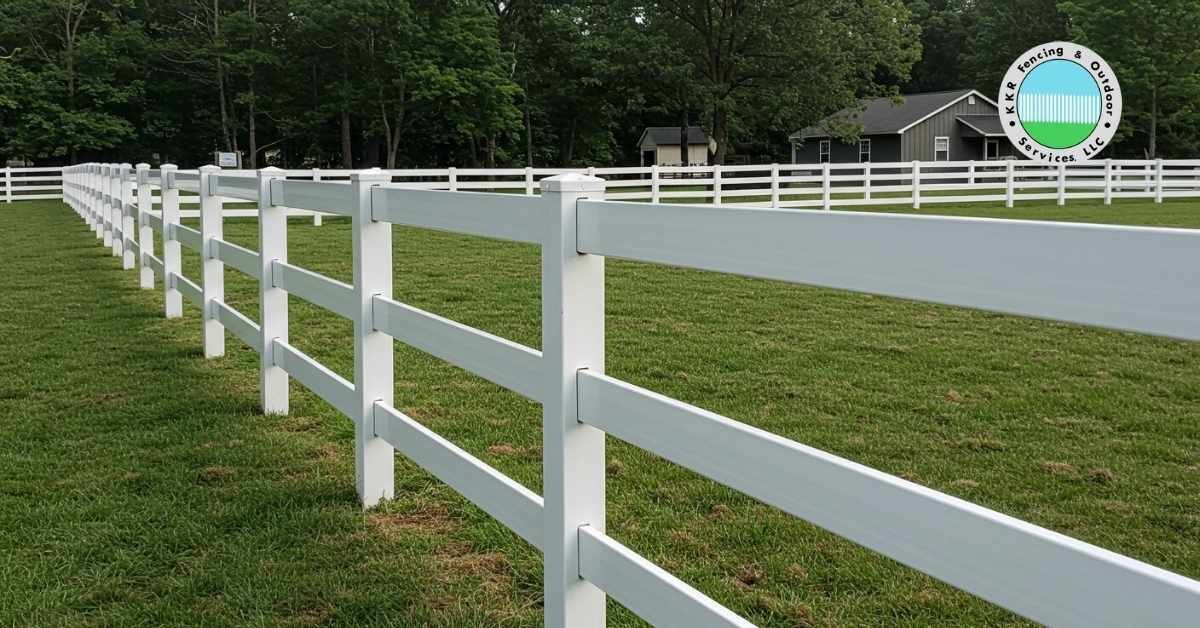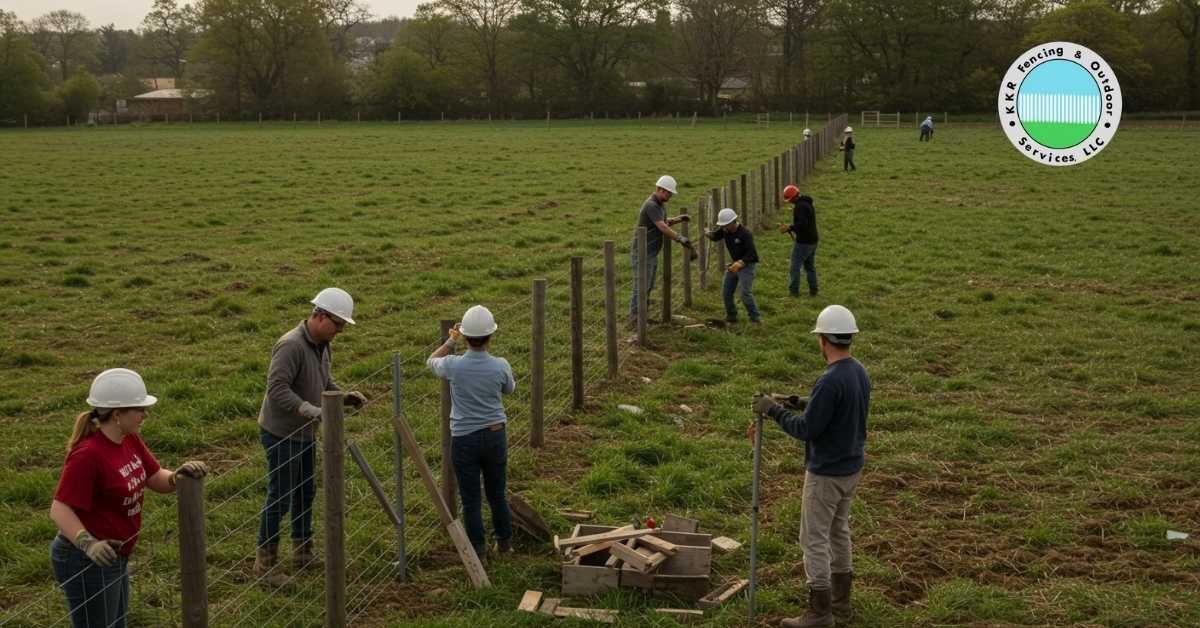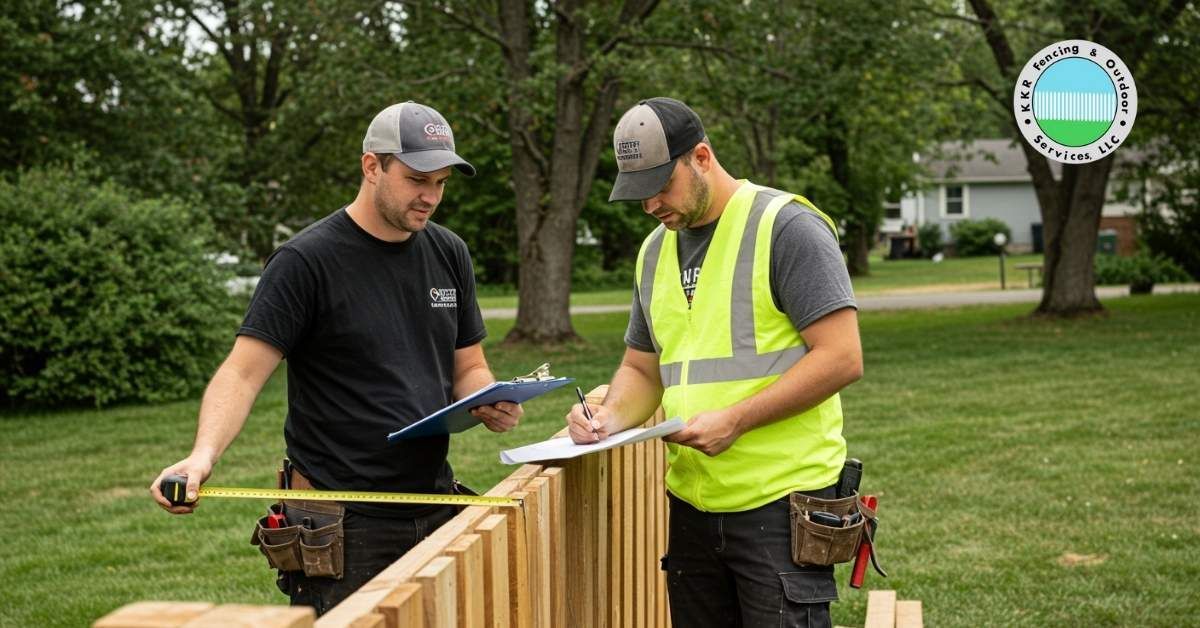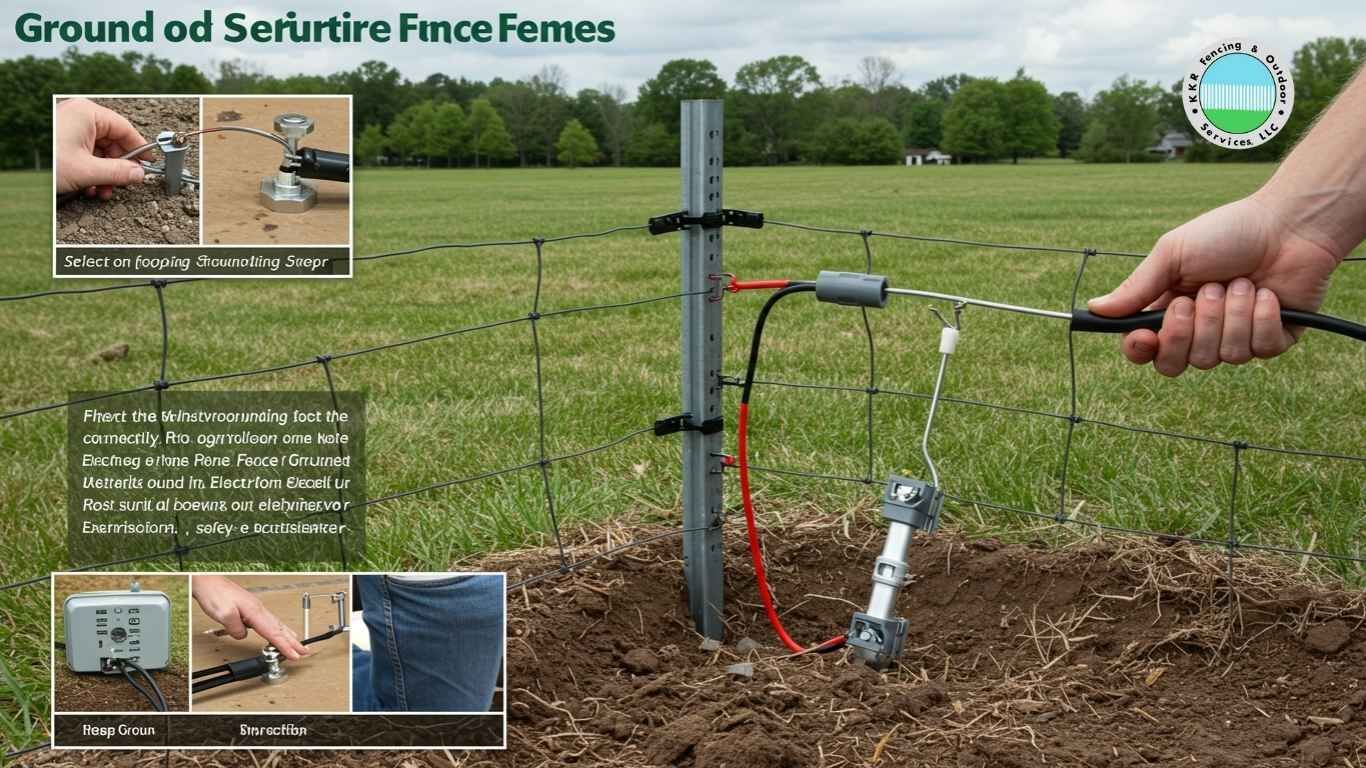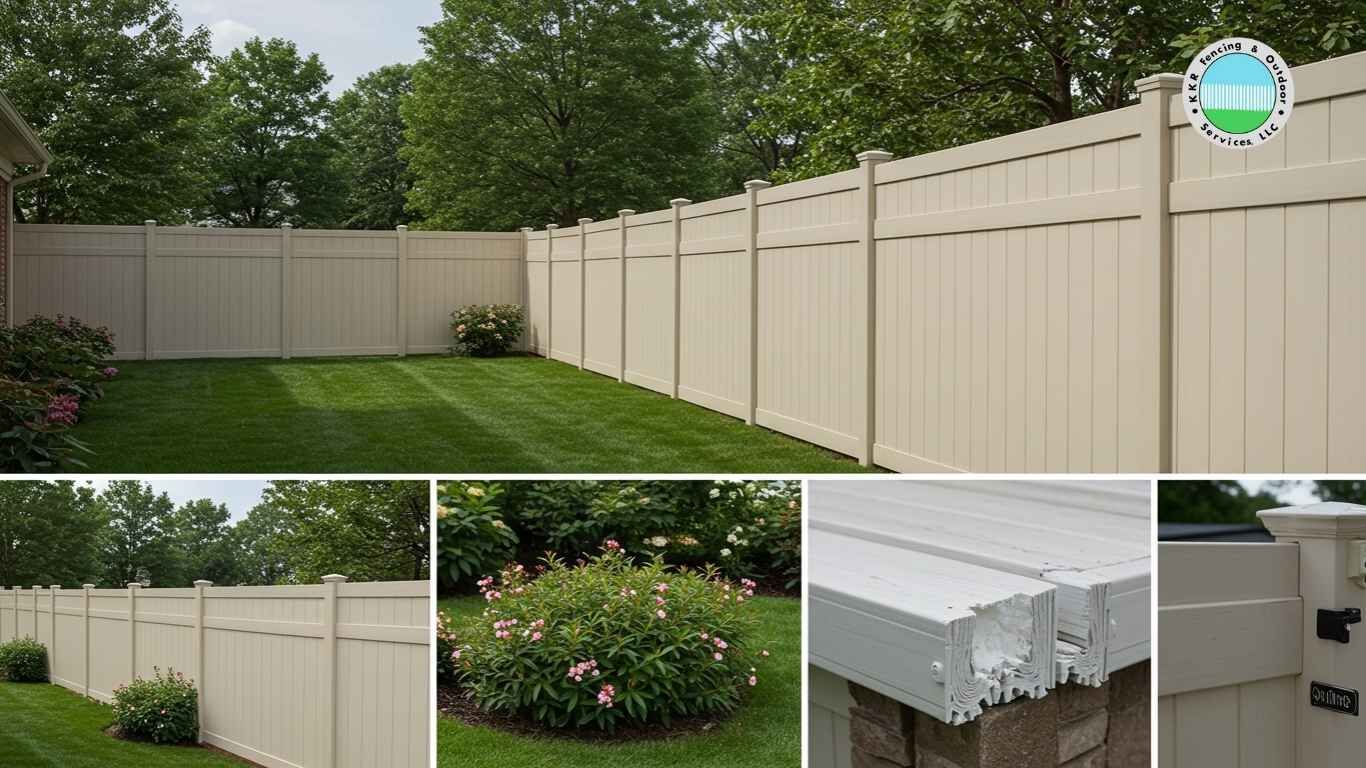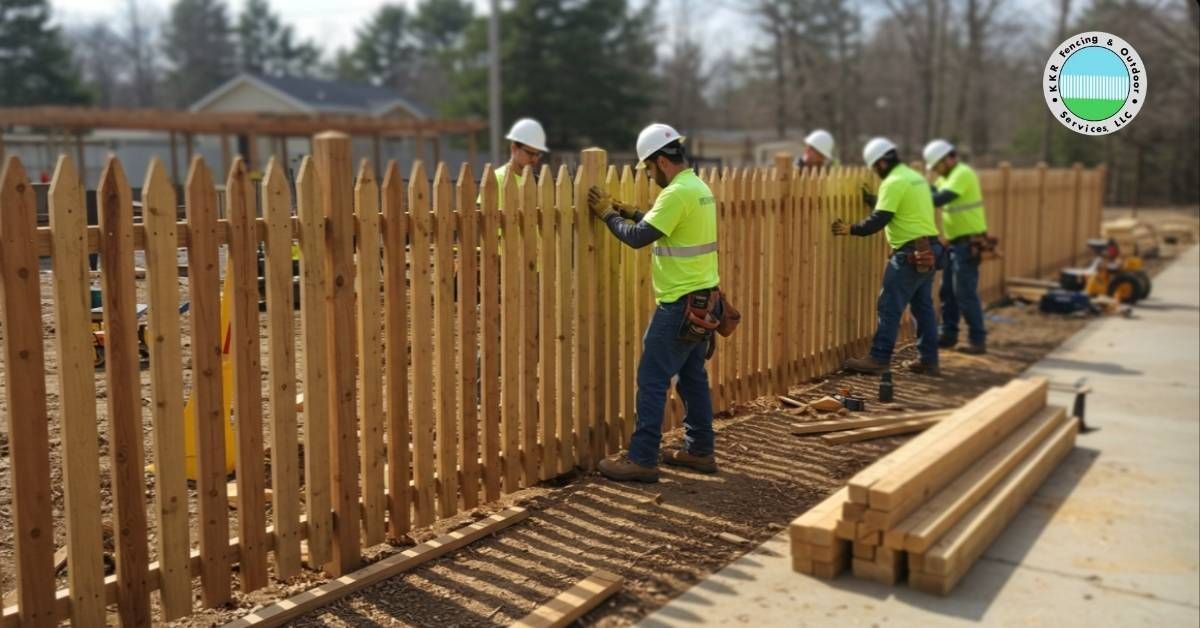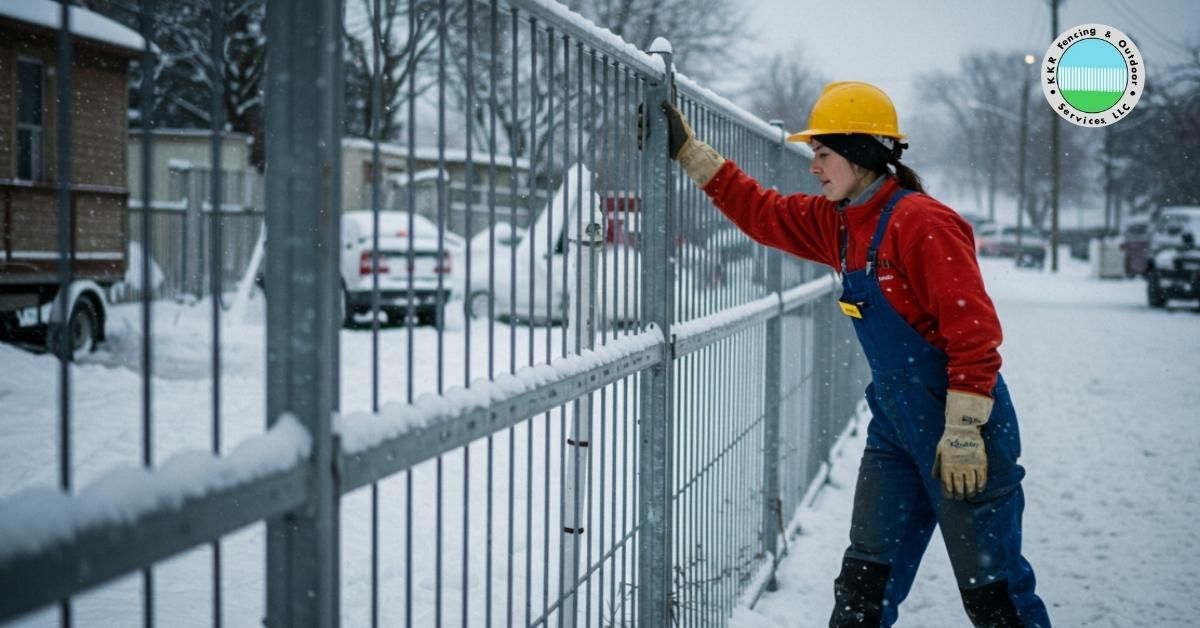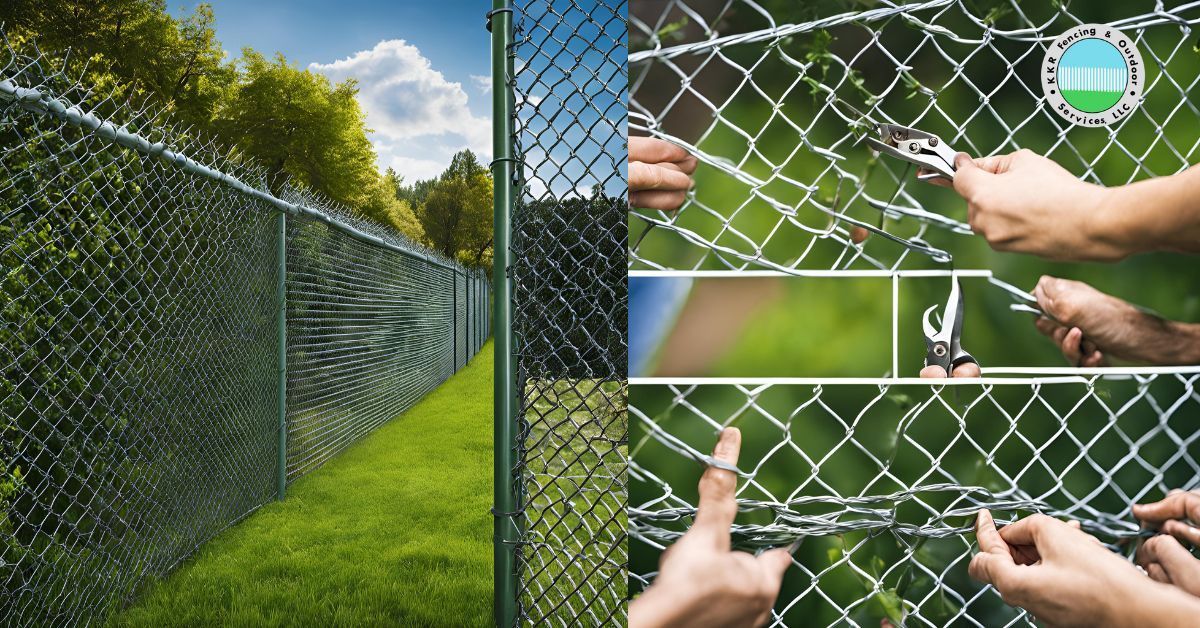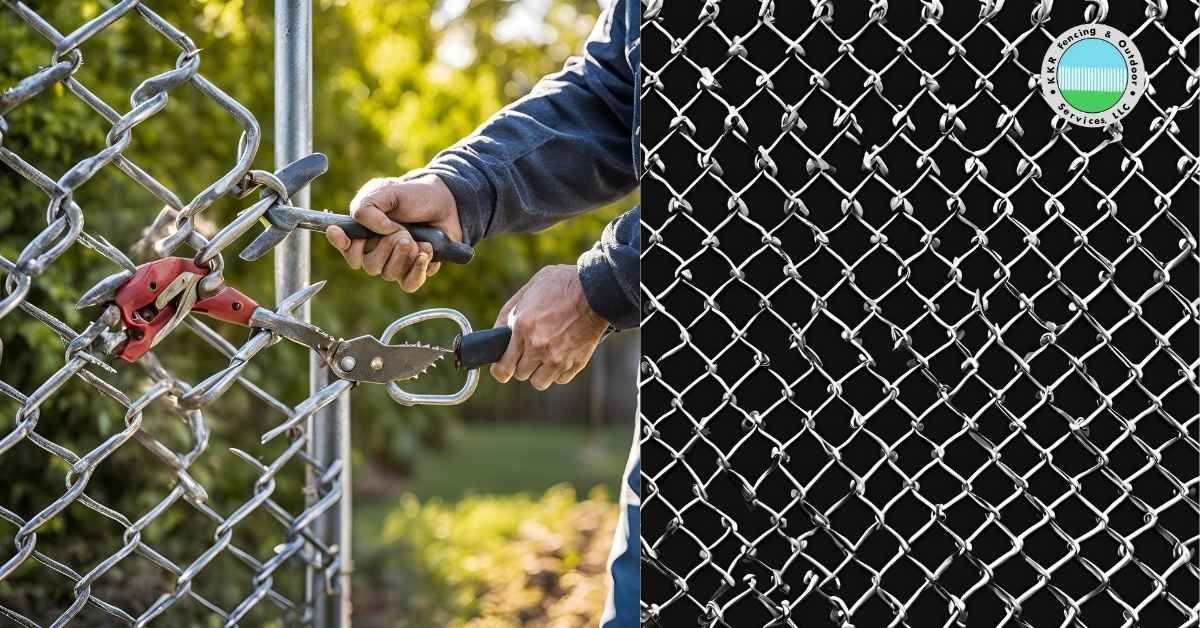Get Started On Your Fence Project | Call Today for a FREE Estimate
Is Chain Link Fence Cheaper Than Wood?
When it comes to enhancing your property’s security, privacy, and aesthetic appeal, choosing the right fencing material is a crucial decision. Among the most popular fencing options are chain link and wood fences, each with distinct benefits and drawbacks. For many homeowners, the choice often comes down to budget. Understanding the cost implications, including the initial investment, ongoing maintenance, and potential long-term savings, is essential for making an informed decision. In this article, we’ll explore whether a chain link fence is genuinely cheaper than a wood fence and examine other factors that could influence your choice. By the end, you’ll have a clear picture of which option best fits your needs and budget.
Yes, chain link fences are generally cheaper than wood fences, both in terms of initial cost and long-term maintenance expenses, making them a more budget-friendly option for homeowners seeking durable and cost-effective fencing solutions.
Initial Investment:
Chain Link vs. Wood The initial cost of installing a fence is often the first and most significant consideration for homeowners. Chain link fences are known for their affordability, with prices typically ranging from $5 to $20 per linear foot. This lower cost is largely due to the materials used—galvanized steel, which is both durable and inexpensive. Installation is also relatively straightforward, further reducing labor costs.
On the other hand, wood fences offer a more traditional and aesthetically pleasing option, but at a higher price. Depending on the type of wood (such as cedar, pine, or redwood), the design, and the height, wood fences can cost between $20 and $50 per linear foot. Installation requires more time and labor, especially for custom designs, which further adds to the expense. For a 200-foot fence, a chain link option might cost between $1,000 and $4,000, while a wood fence could range from $4,000 to $10,000. Therefore, if your primary concern is the upfront cost, chain link fences are the more budget-friendly option.
Long-Term Expenses:
Maintenance and Durability While the initial investment is crucial, it’s equally important to consider the long-term costs associated with maintaining and repairing your fence over the years. Chain link fences are celebrated for their durability and low maintenance requirements. The galvanized steel used in chain link fences is resistant to rust and corrosion, requiring minimal upkeep. Occasional cleaning and inspections for damages are typically all that’s needed to keep a chain link fence in good condition. This durability means that, over time, the cost of maintaining a chain link fence is relatively low.
In contrast, wood fences require more frequent and intensive maintenance to preserve their appearance and structural integrity. Wood is susceptible to rot, insect damage, and weathering, particularly in climates with high humidity or extreme temperatures. To protect against these elements, wood fences need regular staining, painting, or sealing. Additionally, individual boards or posts may need to be replaced periodically due to damage or wear. These maintenance tasks can add up in terms of both time and money, making wood fences more expensive to maintain over their lifespan.
Aesthetics and Property Value
A fence’s appearance can significantly impact your property’s curb appeal and overall value. Wood fences are often chosen for their natural beauty and versatility. They can be customized to complement a wide range of architectural styles, from rustic to contemporary. The warm, natural look of wood can enhance the aesthetic appeal of your property, potentially increasing its market value. However, this visual appeal comes with higher costs, both in terms of the initial investment and the ongoing maintenance required to keep the fence looking its best.
Chain link fences, while more affordable and easier to maintain, are generally considered less attractive than wood fences. They are typically chosen for their functionality rather than their appearance. However, there are options to improve the aesthetics of a chain link fence, such as adding vinyl coatings or privacy slats, which can make them more visually appealing. While a chain link fence may not significantly increase your property’s value, it also won’t detract from it, particularly if it meets a specific functional need, such as securing a large yard or providing a safe enclosure for pets.
Lifespan and Replacement Costs
Another critical factor to consider is the lifespan of your fence and the cost of replacement when the time comes. Chain link fences are renowned for their longevity. With proper maintenance, they can last for several decades. The galvanized steel used in these fences is highly resistant to rust and can withstand harsh weather conditions. In the event that a section of the fence becomes damaged, repairs are relatively simple and inexpensive. Often, individual sections can be replaced without the need to dismantle the entire fence, keeping replacement costs low.
Wood fences, while durable, typically have a shorter lifespan than chain link fences. The exact lifespan of a wood fence depends on factors such as the type of wood used, the local climate, and the level of maintenance. On average, a well-maintained wood fence can last between 20 and 30 years. However, over time, wood fences may require more extensive repairs, such as replacing entire sections or posts, which can be costly. Eventually, the fence may need to be replaced entirely, which involves a significant investment in materials and labor.
Factors That Affect Fence Costs
Several factors can influence the overall cost of installing and maintaining a fence, whether it’s chain link or wood.
- Location-Specific Costs: The cost of materials and labor can vary significantly depending on your location. In some regions, wood may be more expensive due to transportation costs or local building codes. Similarly, the cost of labor can vary depending on the availability of skilled workers in your area.
- Size and Coverage Area: The larger the area you need to fence, the higher the overall cost. Both chain link and wood fences require more materials and labor as the size of the fence increases, so it’s essential to consider the total length and height of the fence when calculating costs.
- Customization and Design: Custom features such as decorative elements, unique designs, or additional gates can add to the cost of both chain link and wood fences. While chain link fences typically offer fewer customization options, wood fences can be tailored to fit a specific aesthetic, which can significantly increase the price.
Conclusion
In conclusion, when comparing chain link fences and wood fences, it’s clear that chain link fences offer a more budget-friendly option in terms of both initial cost and long-term maintenance. They are durable, low-maintenance, and relatively inexpensive to repair or replace. However, wood fences provide greater aesthetic appeal and can enhance your property’s value, making them a worthwhile investment for homeowners who prioritize appearance and customization.
Ultimately, the decision between a chain link fence and a wood fence depends on your budget, aesthetic preferences, and the specific needs of your property. By carefully considering the factors outlined in this article, you can make an informed choice that best suits your situation.
FAQ Section
Is a chain link fence cheaper than wood?
Yes, chain link fences are generally cheaper than wood fences in terms of both the initial installation cost and long-term maintenance. Chain link fences require less expensive materials, and the installation process is quicker, which reduces labor costs. Over time, their low-maintenance nature also contributes to overall cost savings.
How much does it cost to install a 200-foot chain link fence?
The cost to install a 200-foot chain link fence can range from $1,000 to $4,000, depending on factors such as the height of the fence, the gauge of the wire, and any additional features like vinyl coating or privacy slats. This price range makes chain link fencing a cost-effective option for homeowners.
Does a chain link fence decrease property value?
Chain link fences typically do not decrease property value, but they may not significantly increase it either. They are functional and affordable, making them suitable for specific uses, such as securing a yard or creating a pet enclosure. However, if aesthetics are a priority, a well-maintained wood fence may offer more appeal and potentially increase property value.
What are the disadvantages of a chain link fence?
The main disadvantages of a chain link fence include its lack of privacy, as the mesh material is see-through, and its utilitarian appearance, which some homeowners may find less attractive than wood or other types of fences. Additionally, while chain link fences are durable, they can rust over time if not properly maintained, especially in areas with high humidity or exposure to saltwater.
How long does a wood fence typically last?
A well-maintained wood fence can last between 20 and 30 years, depending on factors such as the type of wood, climate, and level of maintenance. Regular upkeep, including staining, painting, and repairing damaged sections, is essential to prolong the lifespan of a wood fence. However, wood fences are generally less durable than chain link fences and may require more frequent repairs or eventual replacement.
For reliable fencing services in New York, visit KKR Fencing NY.
If you’re looking to enhance your website’s SEO, connect with our partners at Pro Growe.
Call Now for a Free Estimate
We serve clients In Delevan, East Aurora, Erie County, Buffalo, NY And Beyond.
Nearby Location We Serve
Niagara Falls | Delevan | East Aurora | Erie County | Sanborn | Wheatfield | Tonawanda | Lockport | Basom | Indian Falls | Pembroke | Corfu | Darien Center | Batavia | Alexander | Attica Alden | Clarence | Warsaw | Arcade | Houghton | Springville | Gowanda | Dunkirk | Irving | Hamburg | Orchard Park |Blasdell | Amherst | Cheektowaga
All Rights Reserved | KKR Fencing & Outdoor Services LLC
